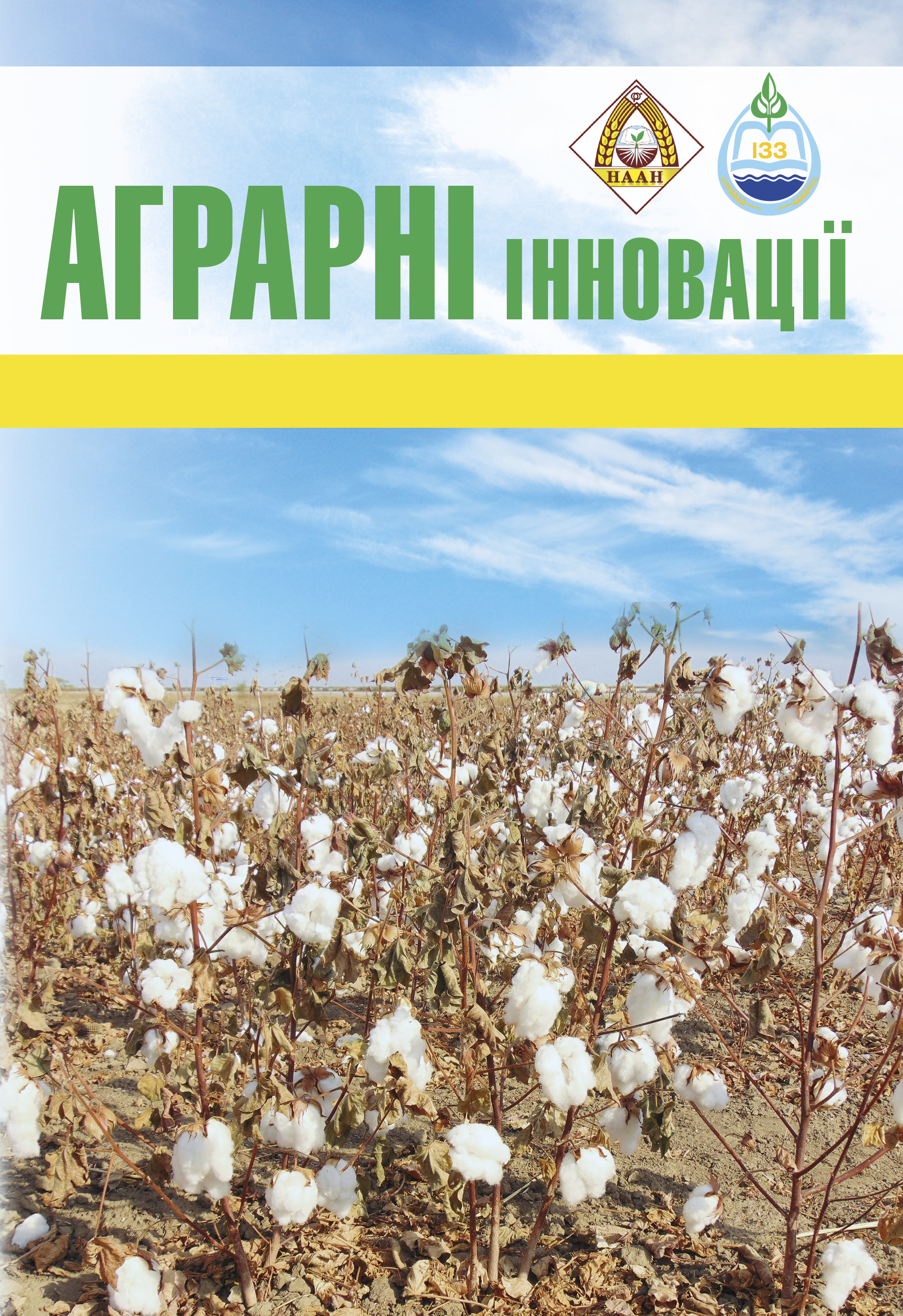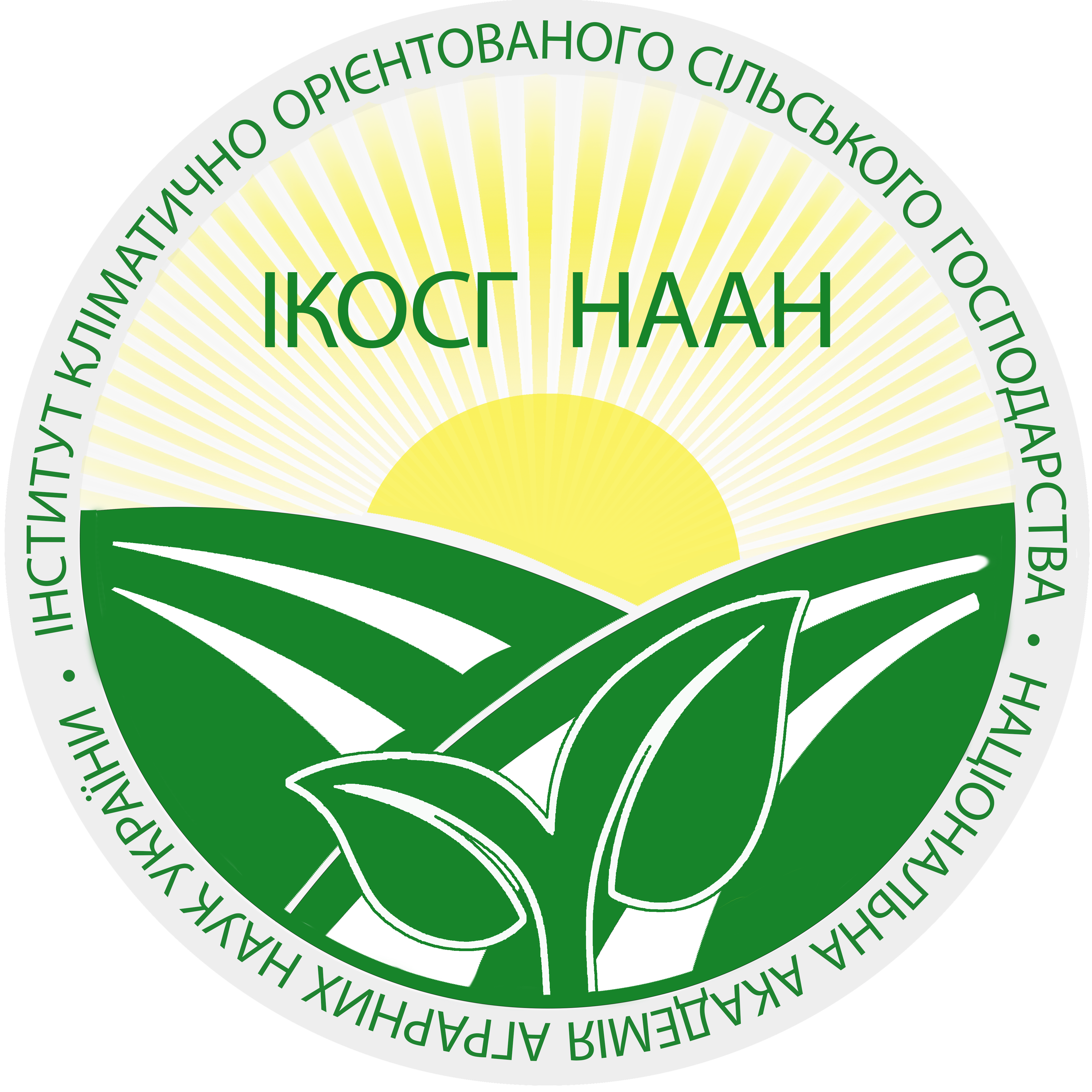Роль мікроорганізмів у сільському господарстві в умовах дефіциту ресурсів та зміни клімату – огляд
Анотація
Вступ. Зміна клімату, нестача ресурсів та водночас їх збереження ставлять перед сільським господарством нові завдання для забезпечення продовольчої безпеки.Широке використання мікроорганізмів дозволить вирішити цю проблему. Взаємодія рослин і бактерій у ризосфері відбувається через безліч процесів, але головними є ті, що визначають ріст і розвиток рослин та родючість ґрунту. Результати. Ризобактерії PGPR проявляють свій благотворний вплив по-різному, або стимулюють природні процеси для посилення та підвищення поглинання поживних речовин та їх засвоєння і синтезують певні сполуки для рослин, чи запобігають та захищають рослини від хвороб і сприяють підвищенню їх стійкості до абіотичного стресу рослини за допомогою таких процесів, як синтез фітогормонів, фіксація азоту, солюбілізація фосфатів і біоконтроль захворювань. Встановлення симбіотичних відносин з азотфіксуючими бактеріями результатом якого, є важливий процес біологічної азотфіксації, де атмосферний азот повітря перетворюється на аміак (NH3), доступну форму азоту для рослин та завдяки цьому процесу бобові культури щорічно здатні фіксувати приблизно від 100 до 300 кг/га атмосферного азоту (N2) при правильному підборі сортштам. Крім того, за допомогою процесу солюбілізації фосфату, PGPR розчиняють фосфор та інші мінеральні поживні речовини, цим підвищують їх доступність для рослин. Мікроорганізми (PSM), особливо фосфатсолюбізуючі бактерії (PSB), що солюбілізують фосфат, відіграють дуже важливу роль у живленні рослин фосфором. До того ж, є бактерії, що розчиняють калій (KSB).Ризобактерії також здійснюють біоконтроль захворювань, вони продукують сидерофори і окрім покращення стану рослин і живлення залізом, вони ще пригнічують ріст інших мікроорганізмів зокрема, перешкоджають росту патогенів, шляхом обмеження доступу патогену до заліза. Арбускулярні мікоризні гриби (AMF) можуть співіснувати з більш ніж 70-90% видами рослин для встановлення симбіотичних стосунків, із стійким симбіозом між ними. У симбіозі, рослини-господарі забезпечують гриби AM джерелом органічного вуглецю, і контролюється як рослиною, так і грибом, щоб підтримувати стабільні симбіотичні стосунки. Рослини-господарі обирають найкращих партнерів для симбіозу та постачають їм більшу кількість вуглеводів в обмін, отриманих від грибів, більше мінеральних поживних речовин. У таких мутуалістичних стосунках, мікоризний гриб сприяє більшому поглинанню поживних речовин рослинами-господарями (фосфор, вода та мінерали) за рахунок збільшення кореневої системи та рослини, які колонізовані AMF, мають кращу стійкість до екологічних стресів, таких як посуха, холод, забруднення. Висновок.Правильний підбір ризобактерій, АМФ та рослин-господаря, при їх спільному застосуванні, може забезпечити високий синергітичний ефект за різними ознаками та властивостями (рівень симбіотичної азотфіксації, активізація загальної захисной системи рослини, архитектура кореня, продуктивність).
Посилання
2. Efficacy of Rhizobium and Pseudomonas strains to improve physiology, ionic balance and quality of mung bean under salt-affected conditions on farmer’s field / Ahmad M., Zahir Z.A., Khlid M., Nazls F., Arshad M. Plant Physiol Biochem. 2013. Vol. 63. P. 170-176. doi: 10.1016/j.plaphy.2012.11.024.
3. Ali M.A., Naveed M., Mustafa A., Abbas A. The Good, the Bad, and the Ugly of Rhizosphere Microbiome. In: Probiotics and Plant Health. Kumar V., Kumar M., Sharma S., Prasad R. (eds). Springer, Singapore. 2017. https://doi.org/10.1007/978-981-10-3473-2_11.
4. Al-Karaki G. N. Nursery inoculation of tomato with arbuscular mycorrhizal fungi and subsequent performance under irrigation with saline water. Scientia Horticulture. 2006. Vol. 109, Issue 1. P. 1-7. https://doi. org/10.1016/j.scienta.2006.02.019
5. Anand K., Kumari B., Mallick M. A. Phosphate solubilizing microbes: An effective and alternative approach as bio- fertilizers. J. Pharm. Sci. 2016. Vol 8, Issue 2. Р. 37-40.
6. Azcon R., Rubio R., Barea J. M. Selective interactionsbetween different species of mycorrhizal fungi and Rhizobiummeliloti strains, and their effects on growth, Ng fixation (^^N) and nutrition of Medicago sativa L. New Phytologist. 1991. Vol. 117, P. 399-404. https://doi.org/10.1111/j.1469-8137.tb00003.x
7. Plant growth-promoting rhizobacteria: Context, mechanisms of action, and roadmap to commercialization of biostimulants for sustainable agriculture / Backer R., Rokem J.S., Ilangumaran G., Lamont J., Praslickova D., Ricci E., Subramanian S., Smith D.L. Front. Plant Sci. 2018. Vol. 9. https://doi.org/10.3389/fpls.2018.01473
8. Bago B., Philip E. Pfeffer, Yair Shachar-Hill. Carbon Metabolism and Transport in Arbuscular Mycorrhizas. Plant Physiol. 2000. Vol. 124, Issue 3. P. 949-58. doi: 10.1104/pp.124.3.949
9. Barea J. M., Tobar R. M., Azcon-Aguilar C. Effect of a genetically modified Rhizobium meliloti inoculant on the development of arbuscular mycorrhizas, root morphology, nutrient uptake and biomass accumulation in Medicago sativa. New Phytol. 1996. Vol. 134, Issue 2. Р. 361-369. https://doi.org/10.1111/j.1469-8137.1996.tb04641.x
10. Benaffari W., Boutasknit A., Anli M. et al. The native arbuscular mycorrhizal fungi and vermicompost- based organic amendments enhance soil fertility, growth performance, and the drought stress tolerance of quinoa. Plants. 2022. Vol. 11. P. 393. https://doi.org/10.3390/plants11030393
11. Strigolactones stimulate arbuscular mycorrhizal fungi by activating mitochondria / Besserer A., Puech-Page`s V., Kiefer P., Gomez-Roldan V., Jauneau A., et al. PLoS. 2006. Vol. 4, Issue 7:e226. DOI: 10.1371/journal.pbio.0040226.
12. Bonfante P., Genre A. Mechanisms underlying beneficial plant–fungus interactions in mycorrhizal symbiosis. Nat Commun. 2010. Vol. 1. P. 48. https://doi.org/10.1038/ncomms1046
13. Bio-boosting agriculture: Harnessing the potential of fungi-bacteria-plant synergies for crop improvement. Discov / Brar B., Bala K., Saharan B.S., Sadh P.K., Duhan J.S. Plants. 2024. Vol. 1, P. 21. https://doi.org/10.1007/s44372-024-00023-0
14. Calvo P., Nelson L., Kloepper J. W. Agricultural uses of plant biostimulants. Plant Soil. 2014. Vol. 383. P. 3–41. https://doi.org/10.1007/s11104-014-2131-8.
15. Choudhary D. K., Sharma K. P., Gaur R. K. Biotechnological perspectives of microbes in agro-ecosystems. Biotechnol Lett. 2011. Vol. 33. P. 1905–1910. https://doi.org/10.1007/s10529-011-0662-0.
16. Use of plant growth-promotingbacteria for biocontrol of plant diseases: principles, mechanisms of action, and future prospects / Compant S., Brion D., Jerzy N., Christophe C., Essaíd A. B. Appl Environ Microbiol. 2005. Vol. 71. P. 4951–4959.
17. Dalpé Y., Monreal M. Arbuscular mycorrhiza inoculum to support sustainable cropping systems. Online. Crop Management. 2004. doi:10.1094/CM-2004-0301-09-RV
18. Dar G. H., Zargar M. Y., Beigh G. M. Biocontrol of Fusarium root-rot in the common bean (Phaseolus vulgaris L.) by using symbiotic Glomus mosseae and Rhizobium leguminosarum. MicrobEcol. 1997. Vol. 34. P. 74–80. http://dx.doi.org/10.1007/s002489900036
19. Interconnectedness, length and viability of arbuscular mycorrhizal mycelium as affected by selected herbicides and fungicides / de Novais C.B., Avio L., Giovannetti M., de Faria S.M., Siqueira J.O. et al. Appl. Soil Ecol. 2019. Vol. 143. P. 144–152. doi: 10.1016/j.apsoil.2019.06.013
20. Linkages between root traits, soil fungi and aggregate stability in tropical plant communities along a successional vegetation gradient / Demenois J., Rey F., Ibanez T., Stokes A., Carriconde F. Plant Soil. 2018. 424. 319–334. doi: 10.1007/s11104-017-3529-x
21. Arbuscular mycorrhizal fungi in sustainable agriculture / Demir S., Danesh Y. R., Durak E. D., Najafi S., Boyno G. Plant and Soil Microbiome. 2024. P. 71-100. https://doi.org/10.1016/B978-0-443-19150-3.00017-5.
22. Growth promotion and yield enhancement of peanut (Arachis hypogeal L.) by application of plant growth-promoting rhizobacteria / Dey R., Pal K. K., Bhatt D. M., Chauhan S. M. Microbiol. Res. 2004. Vol. 159. Issue 4,15. P. 371-394. https://doi.org/10.1016/j.micres.2004.08.004.
23. Dhaliwal S. S., Sharma V., Shukla A. K. Impact of micronutrients in mitigation of abiotic stresses in soils and plants ‒ A progressive step toward crop security and nutritional quality. Advances in Agronomy. 2022. Vol. 173. P. 1-78. https://doi.org/10.1016/bs.agron.2022.02.001
24. Roles of arbuscular mycorrhizal fungi on plant growth and performance: importance in biotic and abiotic stressed regulation / Diagne N., Ngom M., Djighaly P.I., Fall D., Hocher V., et al. Diversity. 2020. Vol. 12, Issue 10, P. 370. https://doi.org/10.3390/d12100370
25. Dighton J. Mycorrhizae Encyclopedia of Microbiology (Third Edition). 2009. P. 153-162. https://doi.org/10.1016/B978-012373944-5.00327-8.
26. Fukami J., Cerezini P., Hungria M. Azospirillum: benefits that go far beyond biological nitrogen fixation. AMB Expr. 2018. Vol. 8. P. 73. https://doi.org/10.1186/s13568-018-0608-1.
27. Co-Inoculation with Rhizobia and AMF Inhibited Soybean Red Crown Rot: From Field Study to Plant Defense-Related Gene Expression Analysis. Defense- Related Gene Expression / Analysis Gao X., Lu X., Wu M., Zhang H., Pan R. et. al. PLoS One. 2012. Vol. 7. Issue 3:e33977. doi: 10.1371/journal.pone.0033977
28. Ghazi N. Al-Karaki. Nursery inoculation of tomato with arbuscular mycorrhizal fungi and subsequent performance under irrigation with saline water. Scientia Horticulture. 2006. Vol. 109, Issue 1. P. 1-7. https://doi.org/10.1016/j.scienta.2006.02.019
29. Gill S. S., Tuteja N. Reactive oxygen species and antioxidant machinery in abiotic stress tolerance in crop plants. Plant Physiol. Biochem. 2010. Vol. 48, Issue 12. P. 909-930. https://doi.org/10.1016/j. plaphy.2010.08.016
30. Gomathy M., Sabarinathan K. G., Priya J., Ananthi K., Dilip S. Synergistic Interactions of PGPR and AM Fungi in Enhancing Crop Productivity – A Winning Microbial Combination. Int J. Environ Sci Nat Res. 2024. Vol. 33, Issue 3:556365. DOI: 10.19080/IJESNR.2024.33.556365
31. Good A. Toward nitrogen-fixing plants. Science. 2018. Vol. 359, Issue 6378. P. 869-870. DOI: 10.1126/science. aas8737
32. Portraying mechanics of plant growth promoting rhizobacteria (PGPR): A review / Goswami D., Thakker J. T., Pinakin C., Dhandhukia P. C., Moral M. T. Cogent Food & Agriculture. 2016. Vol. 2, Issue 1. https://doi.org/10.1080/23311932.2015.1127500
33. Han H. S., Supanjan, Lee K. D. Effect of co-inoculation with phosphate and potassium solubilizing bacteria on mineral uptake and growth of pepper and cucumber. Plant Soil and Environment. 2006. Vol. 52. P. 130-136.
34. Role of Plant Growth Promoting Rhizobacteria (PGPR) as a Plant Growth Enhancer for Sustainable Agriculture: A Review / Hasan A., Tabassum B., Hashim M., Khan N. Bacteria. 2024. Vol. 3, Issue 2. P. 59-75. https://doi.org/10.3390/bacteria3020005
35. The Interaction between Arbuscular Mycorrhizal Fungi and Endophytic Bacteria Enhances Plant Growth of Acacia gerrardii under Salt Stress / Hashem A., Abd Allah E.F., Alqarawi A.A., Al-Huqail A.A., Wirth S. et al. Front. Microbiol. 2016. Vol. 7:1089. doi: 10.3389/ fmicb.2016.01089
36. Soil beneficial bacteria and their role in plant growth promotion: a review / Hayat R., Ali S., Amara U., Khalid R., Ahmed I. Ann Microbiol. 2010. Vol. 60. P. 579–598. https://doi.org/10.1007/s13213-010-0117-1.
37. Isidra-Arellano M.C., Delaux P.M., Valds-Lpez O. The Phosphate Starvation Response System: Its Role in the Regulation of Plant-Microbe Interactions. Plant Cell Physiol. 2021. Vol. 62. P. 392–400. doi: 10.1093/pcp/pcab016.
38. Juniper S., Abbott L. K. Soil salinity delays ger-mination and limits growth of hyphae from propagules ofarbuscular mycorrhizal fungi. Mycorrhiza. 2006. Vol. 16, No. 5. P. 371–379. DOI: 10.1007/s00572-006-0046-9.
39. Kaur S., Singla P., Muskaan S. Interactive Effects of Arbuscular Mycorrhizal Fungi and Rhizobium on Growth and Nutrient Content of Arachis Hypogaea. International Journal of Sustainable Agricultural Research. 2020. Vol. 7, Issue 4. P. 211-227. DOI: 10.18488/journal.70.2020.74.211.227
40. Kebede E. Contribution, Utilization, and Improvement of Legumes-Driven Biological Nitrogen Fixation in Agricultural Systems. Front. Sustain. Food Syst. Sec. Agroecology and Ecosystem Services. 2021. Vol. 5. https://doi.org/10.3389/fsufs.2021.767998.
41. Current scenario and future prospects of plant growth- promoting rhizobacteria: An economic valuable resource for the agriculture revival under stressful conditions / Khoshru B., Mitra D., Khoshmanzar E., Myo E.M., Uniyal N. et al. J. Plant Nutr. 2020. Vol. 43. P. 3062–3092. https://doi.org/10.1080/01904167.2020.1799004
42. Reciprocal rewards stabilize cooperation in the mycorrhizal symbiosis / Kiers E.T., Duhamel M., Beesetty Y., Mensah J.A., Franken O., et al. SCIENCE. 2011. Vol. 333, Issue 6044. P. 880-882. DOI: 10.1126/science.1208473
43. Kloepper J. W., Lifshitz R., Zablotowich R. K. Free living bacterial inocula for enhancing crop productivity. Trends Biotechnol. 1989. Vol. 7, Issue 2. P. 39-44. https://doi.org/10.1016/0167-7799(89)90057-7.
44. Persistence of soil organic carbon caused by functional complexity / Lehmann J., Hansel C.M., Kaiser C., Kleber M., Maher K., et al. Nat. Geosci. 2020. Vol. 13. P. 529–534. doi: 10.1038/s41561-020-0612-3
45. Arbuscular mycorrhizal fungi alleviate drought stress in C3 (Leymus chinensis) and C4 (Hemarthria altissima) grasses via altering antioxidant enzyme activities and photosynthesis / Li J., Meng B., Chai H., Yang X., Song W., et al. Front. Plant Sci. 2019. Vol. 10, P. 499. https://doi.org/10.3389/fpls.2019.00499
46. Arbuscular mycorrhizal fungi and rhizobia synergistically promote root colonization, plant growth, and nitrogen acquisition / Liu X.Q., Xie M.M., Hashem A., et al. Plant Growth Regul. 2023. Vol. 100, P. 691–701. https://doi.org/10.1007/s10725-023-00966-60
47. Malhotra H., Sharma S., Pandey R. Phosphorus Nutrition: Plant Growth in Response to Deficiency and Excess. In book: Plant Nutrients and Abiotic Stress Tolerance. 2018. Doi: 10.1007/978-981-10-9044-8 7.
48. Marschner H., Dell B. Nutrient uptake in mycorrhizal symbiosis. Plant Soil. 1994. Vol. 159. P. 89–102. https://doi.org/10.1007/BF00000098
49. Mathew K., Joseph M. K., Topno S. Effect of biofertilizer and photosynthetic bacteria on growth, yield and quality of Strawberry (Fragaria × ananassa Duch.) cv. winter dawn. International Journal of Research in Agronomy. 2024. Vol. 7, Special Issue 7. P. 541-544 DOI: https://doi.org/10.33545/2618060X.2024.v7.i7Sh.1127
50. Arbuscular mycorrhizal fungi and rhizobium facilitate nitrogen uptake and transfer in soybean/maize intercropping system / Meng L., Zhang A., Wang F., Han X., Wang D., et al. Front. Plant Sci., Sec. Plant Nutrition. 2015. Vol. 6. https: //doi.org/10.3389/ fpls.2015.00339
51. Mirdhe R. M., Lakshman H. C. Synergistic interaction between Arbuscular mycorrhizal fungi, Rhizobium and phosphate solubilising bacteria on Vigna unguiculata (L) Verdc. Int. J. Bioassays. 2014. Vol. 3, Issue 5. P. 2096-2099.
52. Visualizing the dynamics of soil aggregation as affected by arbuscular mycorrhizal fungi / Morris E. K., Morris D. J. P., Vogt S., Gleber S.-C., Bigalke M., et al. ISME J. 2019. Vol. 13. P. 1639–1646. https://doi. org/10.1038/s41396-019-0369-0
53. Interaction between arbuscular mycorrhizal fungi and Bacillus spp. in soil enhancing growth of crop plants / Nanjundappa A., Bagyaraj D. J., Saxena A. K., Kumar M., Chakdar H. Fungal Biol Biotechnol. 2019. Vol. 6, Issue 23. https://doi.org/10.1186/s40694-019-0086-5
54. Increased drought stress resilience of maize through endophyticcolonization by Burkholderia phytofirmans PsJN and Enterobactersp. FD17 / Naveed M., Mitter B., Reichenauer T. G., Wieczorek K., Sessitsch A. Environmental and Experimental Botany. 2014. Vol. 97. P. 30-39. http://dx.doi.org/10.1016/j.envexpbot.2013.09.014.
55. Effects of dual inoculation with arbuscular mycorrhizal fungi and rhizobia on Acacia senegal (L.) Willd. seedling growth and soil enzyme activities in senegal / Ndoye F., Kane A., Diedhiou A.D., Bakhoum N., Fall D., Sadio O., et al. Int. J. Biosci. 2015. Vol. 6, No. 2. P. 36-48. http://dx.doi.org/10.12692/ijb/6.2.36-48
56. Newsham K. K., Fitter A. H., Watkinson A. R. Multi- functionality and biodiversity in arbuscular mycorrhizas. Trends Ecol. Evol. 1995. Vol. 10, Issue 10. P. 407-411. https://doi.org/10.1016/S0169-5347(00)89157-0
57. The use of soil microbial potassium solubilizers in potassium nutrient availability in soil and its dynamics / Olaniyan F.T., Alori E.T., Adekiya A.O., Ayorinde B.B., Daramola F.Y., et al. Ann Microbiol. 2022. Vol. 72, Issue 45. https://doi.org/10.1186/s13213-022-01701-8
58. Ortas I., Kaya Z., Çakmak I. Influence of arbuscular mycorrhizae inoculation on growth of maize and green pepper plants in phosphorus– and zinc-deficient soil. In: Horst, W.J., et al. Plant Nutrition. Developments in Plant and Soil Sciences. 2001. Vol 92. Springer, Dordrecht. https://doi.org/10.1007/0-306-47624-X_306
59. Parniske M. Arbuscular mycorrhiza: the mother of plant root endosymbioses. Nat Rev Microbiol. 2008. Vol. 6. P. 763–775. https://doi.org/10.1038/nrmicro1987
60. Pepe A., Giovannetti M., Sbrana C. Different levels of hyphal self-incompatibility modulate interconnectedness of mycorrhizal networks in three arbuscular mycorrhizal fungi within the Glomeraceae. Mycorrhiza. 2016. Vol. 26. P. 325–332. https://doi.org/10.1007/s00572-015-0671-2
61. Pintó-Marijuan M., Munné-Bosch S. Photo-oxidative stress markers as a measure of abiotic stress-induced leaf senescence: advantages and limitations. Exp Bot. 2014. Vol. 65, Issue 14. P. 3845-57. doi: 10.1093/jxb/eru086.
62. Plenchette C. C., Meynard J. M., Fortin J. A. Managing arbuscular mycorrhizal fungi in cropping systems. Can J Plant Sci. 2005. Vol. 85, Issue 1. P. 31-40. https://doi. org/10.4141/P03-159
63. Porcel R., Ruíz-Lozano J. M. Arbuscular mycorrhizal influence on leaf water potential, solute accumulation, and oxidative stress in soybean plants subjected to drought stress. J. Exp Bot. 2004. Vol. 55. P. 1743– 1750.
64. Prajapati K., Modi H. A. The Importance of Potassium in Plant Growth–A Review. Indian Journal of Plant Sciences. 2012. 2-3. P. 177-178.
65. Praveen S. Chemistry of potassium availability in soil. International Journal of Chemical Studies. 2019. 7(1):1916-1918.
66. Requena N., Breuninger M. The Old Arbuscular Mycorrhizal Symbiosis in the Light of the Molecular Era. In: Esser, K., Lüttge, U., Beyschlag, W., Murata, J. (eds) Progress in Botany. Progress in Botany. 2004. Vol 65. Springer, Berlin, Heidelberg. https://doi.org/10.1007/978-3-642-18819-0_13
67. Plant signals and fungal perception during arbus-cular mycorrhizal stablishment / Requena N., Serrano E., Ocón A., Breuninger M. Phytochemistry. 2007. Vol. 68, No. 1. P. 33–40. DOI: 10.1016/j.phytochem.2006.09.036.
68. Riaz U., Murtaza G., Anum W. et al. Plant Growth- Promoting Rhizobacteria (PGPR) as Biofertilizers and Biopesticides. In: Hakeem, K.R., Dar, G.H., Mehmood, M.A., Bhat, R.A. (eds) Microbiota and Biofertilizers. Springer, Cham. 2021. https://doi.org/10.1007/978-3-030-48771-3_11.
69. Arbuscular mycorrhizal symbiosis canalleviate drought induced nodule senescence insoybean plants / Ruiz- Lozano J. M., Collados C., Barea J. M., Azcón R. New Phytologist. 2001. Vol. 151. P. 493–502.http://dx.doi. org/10.1046/j.0028-646x.2001.00196.x
70. Polyphasic Characterization of Indigenous Potassium- Solubilizing Bacteria and Its Efficacy Studies on Maize / Saheewala H., Sanadhya S., Upadhyay S.K., Mohanty S.R., Jain D. Agronomy. 2023. Vol. 13, Issue 7. P. 1919; https://doi.org/10.3390/agronomy13071919
71. Sbrana C., Giovannetti M. Chemotropism in the arbuscular mycorrhizal fungus Glomus mosseae. Mycorrhiza. 2005. Vol. 15. Р. 539–545. https://doi.org/10.1007/s00572-005-0362-5
72. The role of glomalin in mitigation of multiple soil degradation problems / Singh A. K., Zhu X., Chen C., Wu J., Yang B. et al. Crit. Rev. Environ. Sci. Technol. 2020. P. 1–35. doi: 10.1080/10643389 .2020.1862561
73. Effects of biofertilizer on the production of bell pepper (Capsicum annuum L.) in greenhouse / Sini H. N., Barzegar R., Mashaee S. S., Ghahsare M. G., Mousavi- Fard S. et al. Journal of Agriculture and Food Research. 2024. Vol. 16:101060. https://doi.org/10.1016/j.jafr.2024.101060.
74. Smith S. E., Smith F. A., Jakobsen I. Mycorrhizal fungi can dominate phosphate supply to plants irrespective of growth responses. Plant Physiol. 2003. Vol. 13. P. 16-20. https://doi.orq/10.1104/pp.103.024380.
75. Roles of Arbuscular Mycorrhizas in Plant Phosphorus Nutrition: Interactions between Pathways of Phosphorus Uptake in Arbuscular Mycorrhizal Roots Have Important Implications for Understanding and Manipulating Plant Phosphorus Acquisition / Smith S.E., Jakobsen I., Grønlund M., Smith F. A. Plant Physiology. 2011. Vol. 156, Issue 3. P. 1050–1057. https://doi.org/10.1104/pp.111.174581
76. Role of arbuscular mycorrhizal fungi and nitrogen fixing bacteria on legume growth under various environmental stresses. Abdoulaye Soumare / Soumare A., Diop T., Manga A., Ndoye I. International Journal of Biosciences (IJB). 2015. Vol. 7, No. 4. P. 31-46. DOI:10.12692/ ijb/7.4.31-46
77. Effects of combined inoculation of Pea plants with arbuscular mycorrhizal fungi and Rhizobium on nodule formation and nitrogen fixing activity / Stancheva I., Geneva M., Zehirov G., Tsvetkova G., Hristozkova M. et al. Gen. Appl. Plant physiology. 2006. special issue. P. 61-66.
78. Seed inoculation with plant growth promoting rhizobacteria enhances yield of runner bean (Phaseolus coccineus L.) / Stefan M., Munteanu N., Stoleru V., Mihasan M., Hritcu L. Sci. Hortic. 2013. Vol. 151. P. 22-29. https://doi.org/10.1016/j.scienta.2012.12.006.
79. Tajini F., Trabelsi M., Drevon J. J. Combined inoculation with Glomus intraradices and Rhizobium tropici CIAT899 increases phosphorus use efficiency for symbiotic nitrogen fixation in common bean (Phaseolus vulgaris L.). Saudi J Biol Sci. 2011. Vol. 19, Issue 2. P. 157–163. doi: 10.1016/j.sjbs.2011.11.003
80. Kashif Tanwir, Saghir Abbas, Muhammad Shahid, Hassan Javed Chaudhary, Muhammad Tariq Javed. Mycorrhizal Symbiosis and Nutrients Uptake in Plants. Plant Ionomics: Sensing, Signaling, and Regulation. 2023. https://doi.org/10.1002/9781119803041.ch5
81. Interactive effects of Arbuscular mycorrhizal fungi and rhizobial strains on chickpea growth and nutrient content in plant / Tavasolee А., Aliasgharzad N., SalehiJouzani G., Mardi M., Asgharzadeh A. African Journal of Biotechnology. 2011. Vol. 10, Issue 39. P. 7585-7591. DOI: 10.5897/AJB10.2412
82. Genetic diversity of siderophore-producing bacteria of tobacco rhizosphere / Tian F., Ding Y., Zhu H., Yao L., Du B. Brazil. J. Microbiol. 2009. Vol. 40. P. 276–284. doi: 10.1590/S1517-838220090002000013
83. Uarrota V.G. et al. Plant-Rhizobacteria Communications with the Antioxidant System. In: Singh, H.B., Vaishnav, A., Sayyed, R. (eds) Antioxidants in Plant- Microbe Interaction. Springer, Singapore. 2021. https://doi.org/10.1007/978-981-16-1350-0_3
84. Uribe D., Sánchez-Nieves J., Vanegas J. Role of Microbial Biofertilizers in the Development of a Sustainable Agriculture in the Tropics. In: Dion, P. (eds) Soil Biology and Agriculture in the Tropics. Soil Biology. 2010. Vol 21. Springer, Berlin, Heidelberg. https://doi. org/10.1007/978-3-642-05076-3_11.
85. Verma A., Patidar Y., Vaishampayan A. Isolation and purification of potassium solubilizing bacteria from different regions of India and its effect on crop’s yield. Indian J. Microbiol. Res. 2016. Vol. 3, Issue 4. P. 483-488. DOI: 10.18231/2394-5478.2016.0029
86. Beneficial Soil Microbiomes and Their Potential Role in Plant Growth and Soil Fertility / Vincze E.B., Becze A., Becze A., Laslo E., Mara G. Agriculture. 2024. Vol. 14, Issue 1. P. 152. https://doi.org/10.3390/ agriculture14010152.
87. Role of Arbuscular Mycorrhizal Fungi in Regulating Growth, Enhancing Productivity, and Potentially Influencing Ecosystems under Abiotic and Biotic Stresses / Wahab A., Muhammad M., Munir A., Abdi G., Zaman W. et al. Plants. 2023. Vol. 12, Issue 17:3102. doi: 10.3390/plants12173102
88. The role of arbuscular mycorrhizal symbiosis in plant abiotic stress / Wang Q., Liu M., Wang Z., Li J., Liu K. et al. Sec. Microbial Symbioses. 2023. Vol. 14. https://doi.org/10.3389/fmicb.2023.1323881
89. Single or dual inoculation of arbuscular mycorrhizal fungi and rhizobia regulates plant growth and nitrogen acquisition in white clover / Xie M.-M., Zou Y.-N., Wu Q.-S., Zhang Z.-Z., Kuča K. Plant Soil Environ. 2020. Vol. 66. P. 287–294. https://doi.org/10.17221/234/2020-PSE
90. SalaminNonredundant regulation of rice arbuscular mycorrhizal symbiosis by two members of the phosphate transporteri gene family / Yang S. Y., Gronlund M., Jakobsen I., Grotemeyer M. S., Rentsch D. et al. Plant Cell. 2012. Vol. 24, Issue 10. P. 4236–4251. doi: 10.1105/tpc.112.104901
91. Role of Environmental Factors in Legume- Rhizobium Symbiosis: A Review / Yeremko L., Czopek K., Taniak M., Marenych M., Hanhur V. Biomolecules. 2025. Vol. 15, Isuue 1. P. 118. doi: 10.3390/biom15010118.
92. Arbuscular Mycorrhizal Fungi Alter the Interaction Effects Between Bacillus and Rhizobium on Root Morphological Traits of Medicago ruthenica L. / Yu L., Zhang H., Zhang W., Han B., Zhou H. et al. J. Soil Sci Plant Nutr. 2023. Vol. 23. P. 2868–2877. https://doi.org/10.1007/s42729-023-01242-2
93. Water-land-food nexus for sustainable agricultural development in main grain-producing areas of North China lain / Zhu L., Bai Y., Zhang L., Si W., Wang A. et al. Foods. 2023. Vol. 12, Issue 4. P. 712. https://doi. org/10.3390/foods12040712
94. Господаренко Г. М. Агрохімія. Умань, 2024. 572 с.
95. Коць С. Я. Біологічна фіксація азоту: досягнення та перспективи розвитку. Фізіологія рослин і генетика. 2021. Т. 53, №2. С. 128-159. https://doi.org/10.15407/ frg2021.02.128
96. Ніколайчук В. І., Белчгазі В. Й. Фізіологія і біохімія рослин. Ужгород: Вид-во Ужгород, нац. ун-ту, 2005. 192 с.
97. Науково-методичні засади селек- ції та насінництва люцерни в умовах зро- шення / Тищенко О.Д., Вожегова Р.А., Тищенко А.В., Андрусіва Л.В., Боровик В.О. Херсон: ФОП Грінь Д.С., 2017. 236 c.
98. Вплив різних штамів Sinorhizobium meliloti на рівень симбіозу у популяцій люцерни / Тищенко О.Д., Тищенко А.В., Біляєва І.М., Пілярська О.О., Куц Г.М. Аграрні інновації. 2020. №2. С. 72-82. https://doiorg/10.32848/agrar.innov.2020.2.12.

Ця робота ліцензується відповідно до Creative Commons Attribution 4.0 International License.






